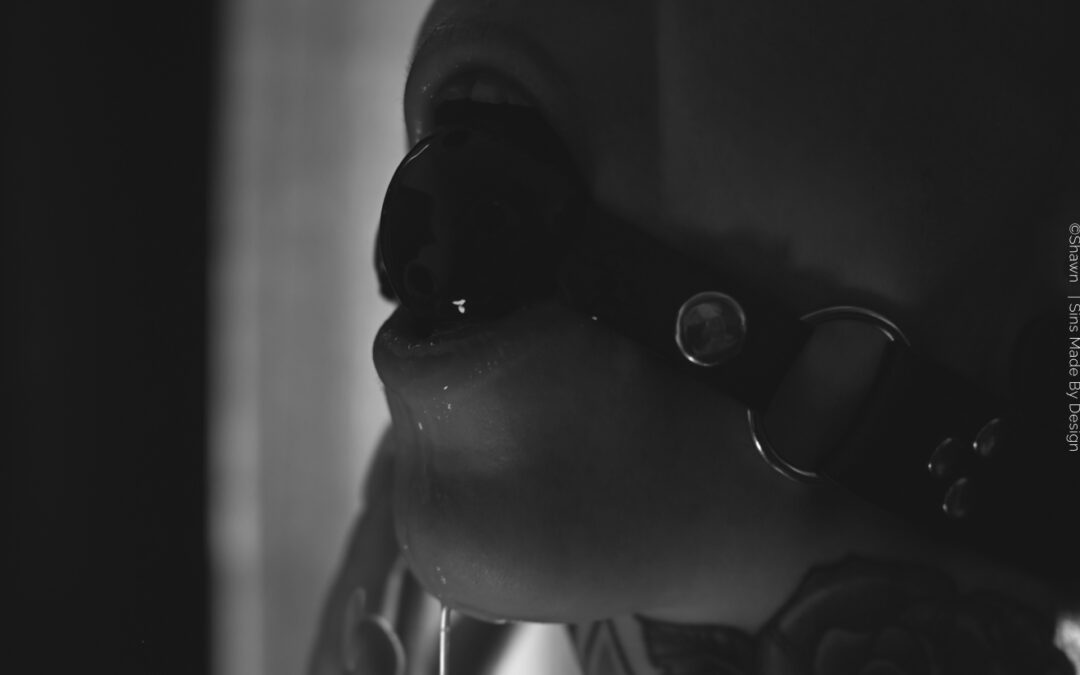BDSM is often viewed as a deviation from the norm, and sometimes even as a disorder. But who defines and determines what is “normal”? X-Blogger Cassie did some research for you and presents the results and her own thoughts on them in this guest post. Honest and authentic.
I am one of those people who allows myself to be hit, choked, tied up and gagged during sex. I am led around the apartment in tight latex outfits and a leash on my leather collar. I’m even insulted and spat at. And I really like all of it. Pretty sick, right?
Is practicing BDSM really pathological?
Funnily enough, in the case of the controversy over whether or not BDSM is sick, I find myself on both sides of the discussion. I have been practicing BDSM for a few years and would describe myself as a passionate Masochist, but at the same time I am studying psychology diligently for a master’s degree and therefore have to be familiar with a wide range of disorders.
The truth is: In the ‘International Statistical Classification of Diseases and Related Health Problems’, or simply, the ‘ICD-10’, sadomasochism is categorized under the diagnosis code ‘F65.5’ (disorders of sexual preference). Within the same category, you’ll find pedophilia and necrophilia.
On paper, BDSM, or at least the sadomasochistic part, is actually a pathological and therefore disordered sexual preference, a so-called “paraphilia”.
F65.5 Sadomasochism
Info: A preference for sexual activity which involves the infliction of pain or humiliation, or bondage. If the subject prefers to be the recipient of such stimulation this is called masochism; if the provider, sadism. Often an individual obtains sexual excitement from both sadistic and masochistic activities.ICD-10
I know exactly how you will react now: “What absolute bullshit! BDSM is not a disorder! What nonsense are you writing here!” But it’s not quite that simple.
In my opinion, something is to be viewed as pathological or sick if it creates subjective suffering for those affected, that is, leads to psychological or physical suffering and puts a strain on the person. Of course, it should not be neglected whether people in the immediate vicinity are equally burdened or even endangered by the behavior of those affected.
So please don’t panic for no reason! Not everything that is listed as an illness in the ICD-10 should or must be treated or corrected.
However, whether practicing BDSM, other paraphilias, or even just “vanilla” sex, it can always happen that a healthy inclination develops into something pathological.
As soon as, for example, you start doing things for your own sexual satisfaction that you actually don’t want to do and can’t agree with, you should seek psychological counseling. Burdening feelings of shame or even a reluctance towards certain practices, which then question voluntary sexual activity, should have no place in sex life.
But especially in BDSM, it can also happen that sexual preference has a negative impact on one’s self-concept, for example if one adopts mindsets such as “I deserve to be humiliated and controlled” from the ‘sexual space’ into everyday life. Or as soon as you have to maintain control over your fellow human beings at all times and everywhere in everyday life.
You should also be careful if you notice that sex is becoming a kind of compulsion or addiction, or that sexual satisfaction is becoming more important than existential security and leading a happy, regular life, as I have often experienced in the wake of financial domination. Something like this should be observed and, in these cases, a clinical diagnosis should definitely be considered.
In general, however, it is of course always true that self-determined, satisfying sexuality in whatever scene has a positive effect on mental and physical health. Suppressing or denying one’s sexual preferences certainly has more serious health consequences than exercising a sexual preference outside the ‘norm’.
So if you take care of yourself, your head and your state of mind, BDSM is of course not a disorder.
If BDSM itself isn’t sick, perhaps the people who practice it are?
BDSM is often seen as a deviation from the norm, but who defines and determines what is “normal”?
Furthermore, it is relatively unclear how many people actually practice BDSM or at least how many have a keen interest in whips, balls gags and bondage ropes.
It may well be that our kinky community is much larger than expected and some people are just a bit shy. Empirical studies range from two to 62 percent of the population. So who knows for sure whether sadomasochism is really that ‘abnormal’?
What cannot be denied, however, is that there is a certain connection between various personality disorders and interest in BDSM. Borderline personality disorder or sadistic and narcissistic personality disorder are particularly affected by this connection.
However, when considering all BDSM practitioners together, people with personality disorders likely make up a small part of the community.
Am I only attracted to BDSM because I’m borderline?
In my youth, I was diagnosed with the aforementioned borderline personality disorder as well as recurrent moderate depressive episodes. Around the same time, I developed an interest in BDSM.
At the time I didn’t perceive a connection between my disorder and my sexual preference, but these days I often wonder whether I would enjoy BDSM if I were ‘healthy’. Especially with all the stereotypes I heard about the connection between BDSM and mental illness, I often found myself wondering and pondering my tendencies.
I’m older now, the symptoms of my disorder are becoming less severe and my love for BDSM still remains. I have come to the conclusion that I should accept my ‘abnormal’ sexual preference as it is, regardless of the origin of its development.
What I have maintained, however, is to regularly reflect on whether BDSM still feels good for me, whether my sexual submission as a sub is having a negative impact on my psyche, or whether I leave a session with stressful feelings and thoughts. I think every person in the scene should do this regularly, whether they have a psychiatric history or not.
However, my story does not answer the question of whether people in the BDSM scene suffer from psychiatric disorders more often than people who feel comfortable in the vanilla area. But fortunately, researchers are also interested in this topic and some psychological studies can help us with their research results.
And this is what it looks like: In summary, neither older nor current studies have found any evidence that would support the fact that clinical disorders such as depression, anxiety disorders and obsessive-compulsive disorder or other pathologies occur more often among people who show an interest in BDSM than in the general population (for example Example Connolly, 2006 or Brown et al 2020).
So why is our sexual preference viewed as so perverted and sick?
Representations in media shape our perception
No matter where you look, it’s always a Christian Gray who, due to childhood trauma, has to exercise compulsive control and violence when having sex with women, or it’s a Sicilian mafioso a la 365 Days who kidnaps a woman and makes her his sub until she falls in love with him. (Ever heard of “Stockholm Syndrome”?)
It’s always the same. BDSM is always portrayed in the context of real danger and pathological behavior. Rarely in a setting in which it should actually take place, a setting full of trust and security.
It is no longer surprising that the general public perceives BDSM fans and Sadomasochists as pathological and ‘abnormal’ or even dangerous when they are portrayed in exactly this way in media such as books, series and films.
Not long ago I also started reading a new BDSM novel series. Already in the first pages of the first volume, the “Dom” threw the protagonist out of a moving car when she refused to call him “Daddy”. So I got to page ten before I had to stop reading in shock.
It seems like healthy representation of BDSM in the media is almost impossible, or at least simply uninteresting. Consensual, healthy sex, which also includes pain and power games, simply seems to be met with a lack of understanding. This combination probably just doesn’t make sense for many vanilla media consumers.
Certainly, phenomena like Fifty Shades of Grey or 365 Days on Netflix have made BDSM more accessible to people outside the scene and may have sparked interest in the topic for them. However, these stories have not necessarily helped depathologize our specific sexual preferences or dispel certain prejudices about BDSM.
Furthermore, it actually puts many newcomers to the scene in danger, as they are taught to naturally associate BDSM with danger, a certain degree of reluctance, or even fear. You are given the feeling that these things are normal between play partners.
But no, that definitely shouldn’t be the reality.
What needs to happen in the future?
Authors as well as film and series makers should be aware of how much influence their depictions of BDSM or other lifestyles and practices can have on consumers’ perceptions. Especially when it comes to practices that can become dangerous if they are conveyed incorrectly and therefore misunderstood.
The dramedy series “Bonding” on Netflix is currently a wonderful example of how series and filmmakers can also be successful if they actively combat BDSM stigmas.
Basically, we are definitely on the right track at the moment, especially thanks to good educational work by the community and new and tolerant movements in research. And here’s some good news at the end: It is unlikely that sadomasochism will be listed as a psychiatric disorder in the next ICDs.









